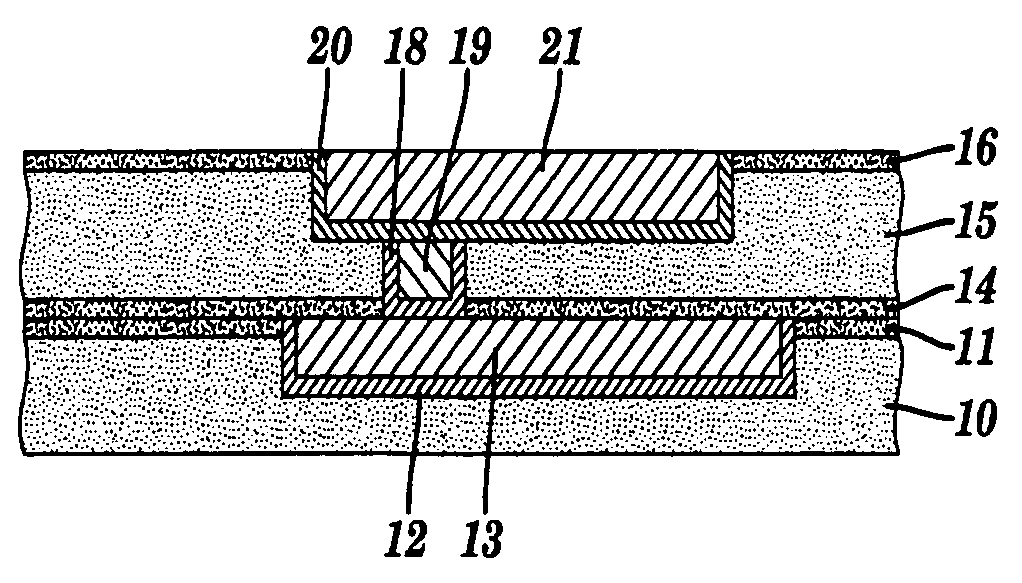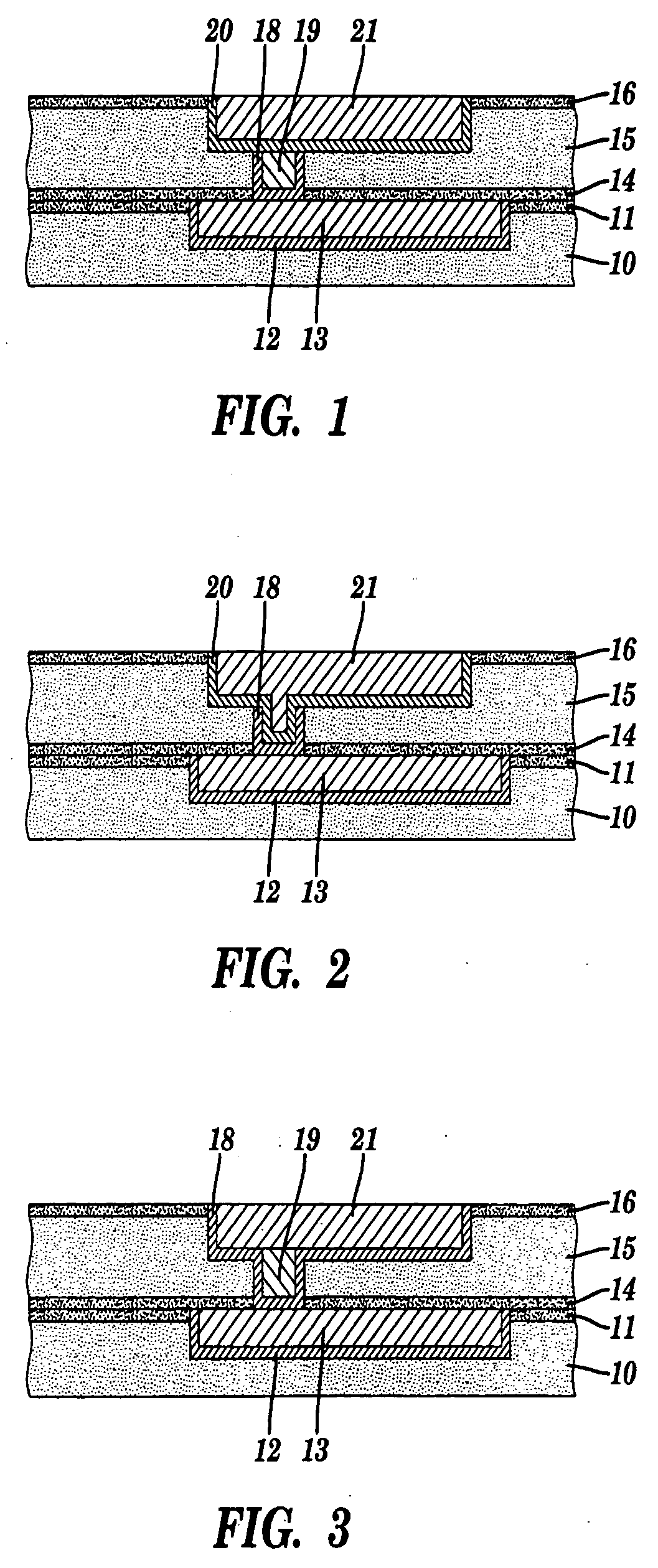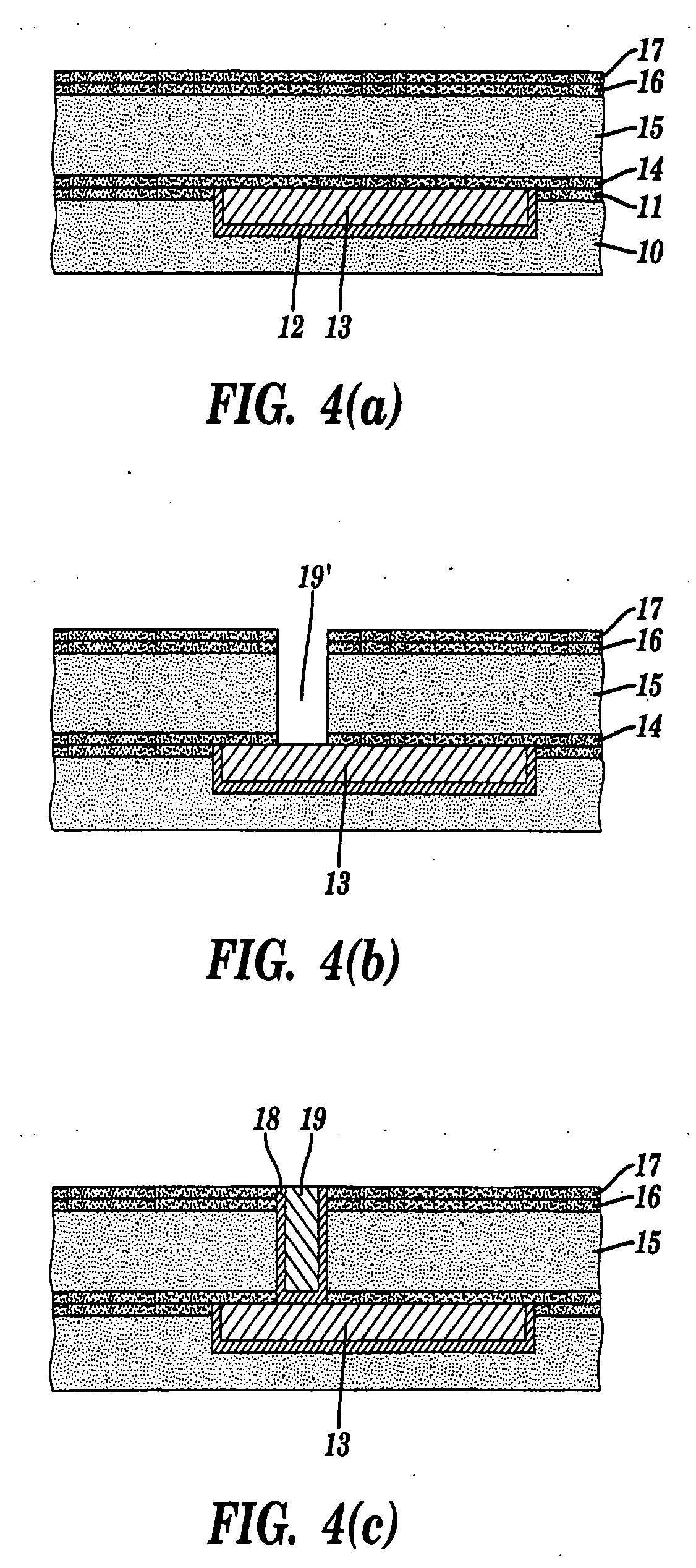Dual damascene interconnect structures having different materials for line and via conductors
- Summary
- Abstract
- Description
- Claims
- Application Information
AI Technical Summary
Benefits of technology
Problems solved by technology
Method used
Image
Examples
first embodiment
[0023] the invention is shown in FIG. 1, which includes a first dielectric layer 10. At least one first conductor 13 is embedded in the first dielectric layer 10 and has a top surface coplanar with the top surface of layer 10. Optionally, a hardmask layer 11 may be deposited on dielectric layer 10, in which case the conductor 13 has a top surface coplanar with the top surface of hardmask layer 11. A conductive liner 12 is also optionally disposed between conductor 13 and dielectric layer 10.
[0024] A second dielectric layer 15 overlies first dielectric layer 10. Optionally, a cap layer 14 separates second dielectric layer 15 from first dielectric layer 10 and first conductor 13. Second dielectric layer 15 has at least one second conductor embedded therein. The second conductor comprises at least one first portion 19, the via or stud, and at least one second portion 21, the line conductor. The first portion 19 overlies and is in electrical contact with the first conductor 13. The seco...
third embodiment
[0030] the invention is shown in FIG. 3, and differs from the embodiment shown in FIG. 1 in that first portion 19 and second portion 21 of the second conductor are both surrounded by liner 18. In other words, first portion 19 and second portion 21 do not have separate liners, as in the embodiment shown in FIG. 1. Rather, a single liner 18 surrounds the bottom and sidewalls of both first portion 19 and second portion 21.
[0031] For the embodiment shown in FIG. 3, the same materials may be used for each of the features discussed with regard to the embodiment shown in FIG. 1. The second portion 21 of the second conductor, i.e. the line conductor, preferably has a total thickness of about 100 to 5000 nm, more preferably about 300 nm. The first portion 19 of the second conductor, i.e. the via, preferably has a height of about 100 to 5000 nm, more preferably about 300 nm. The liner 18 in the via and trench preferably has a thickness of about 2 to 50 nm, more preferably about 20 nm.
[0032] T...
PUM
 Login to View More
Login to View More Abstract
Description
Claims
Application Information
 Login to View More
Login to View More - R&D
- Intellectual Property
- Life Sciences
- Materials
- Tech Scout
- Unparalleled Data Quality
- Higher Quality Content
- 60% Fewer Hallucinations
Browse by: Latest US Patents, China's latest patents, Technical Efficacy Thesaurus, Application Domain, Technology Topic, Popular Technical Reports.
© 2025 PatSnap. All rights reserved.Legal|Privacy policy|Modern Slavery Act Transparency Statement|Sitemap|About US| Contact US: help@patsnap.com



